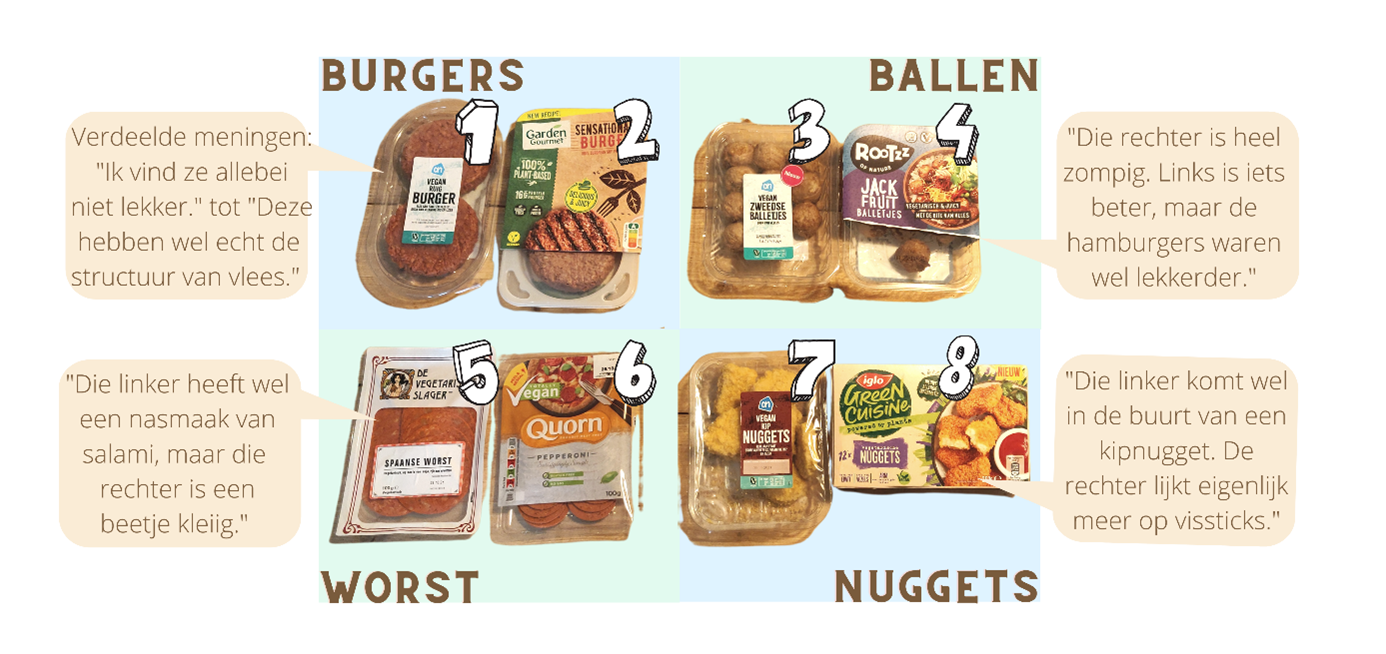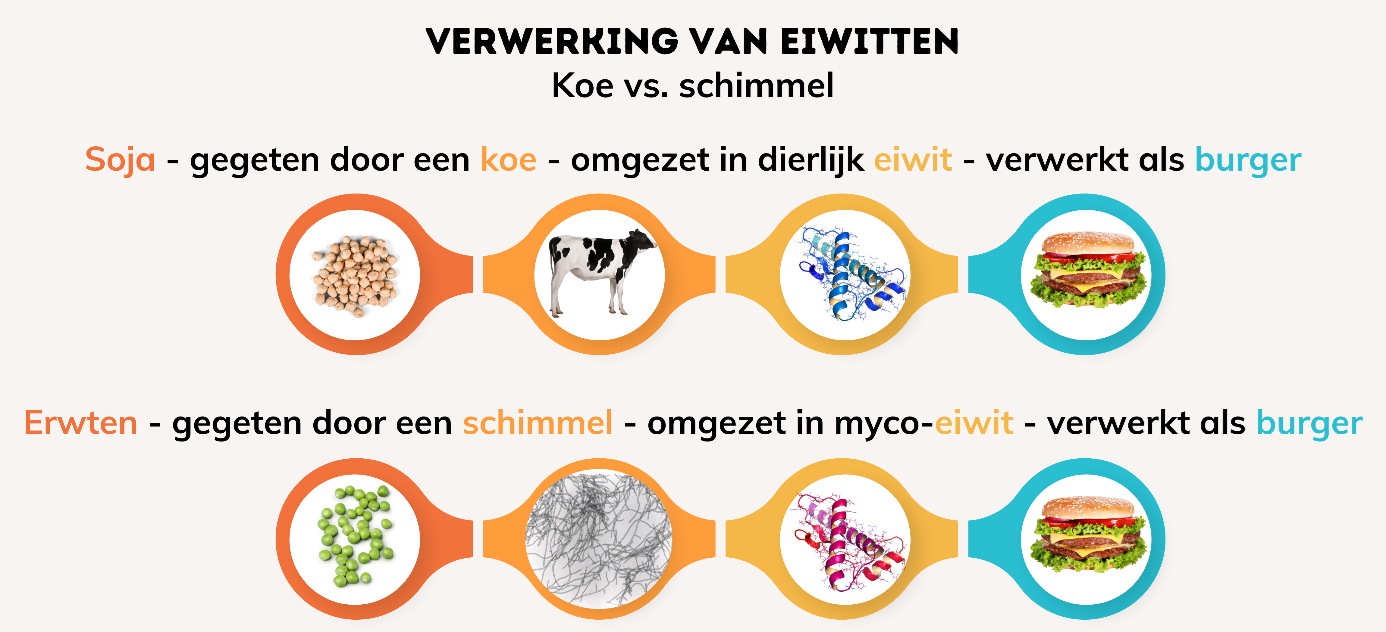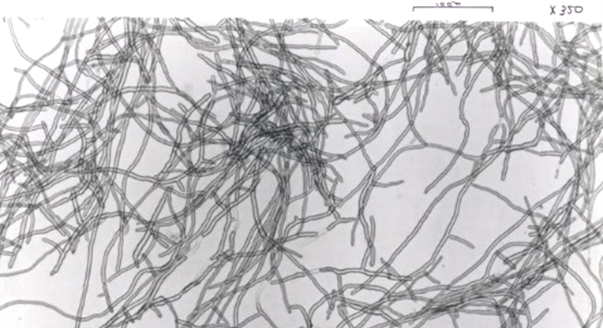A plant-based diet
Fungi: the cows of the future?
Now that even McDonalds has introduced a McPlant, there is no way around it: plant-based meat substitutes will be more and more available. What kind of meat substitutes are actually available in the supermarket? And what can be expected from meat substitutes in the future? In the coming year, a team of Utrecht and Danish researchers will be studying the role that fungi and bacteria can play in plant-based foods, for example in meat substitutes. That may not sound very fresh, but did you know that many types of fungi and bacteria can be very useful for us? Read on soon!
Have you ever seen the meat substitute shelf in the supermarket? At Albert Heijn, for example, there are 117 meat replacement products that are completely plant-based. This means that, in addition to meat, there is not even any egg or dairy in it. By comparison, the same supermarket sells 137 different products with chicken in them. Meat substitutes can therefore be called fairly prominent, but according to a team of Utrecht and Danish researchers, there is still much room for improvement in terms of nutritional values, texture and taste. You will read later how they want to achieve this, but first: how do those meat substitutes from the supermarket actually taste? Below is a selection of a number of different meat substitutes and some opinions from a family that was not yet familiar with these products. With five people, they tried four different types of meat substitutes, and two different brands of each type.

Quotes from the meat substitute taste test.
This is of course just the opinion of one family, but they do like some meat substitutes. However, they prefer to stick to real meat, because the substitutes were not that good.
It was to be expected that there would be different reactions to the different types of meat substitutes, but it was striking that there was also a big difference between two of the same types from other brands. This may be due to the differences in the vegetable material used as the basis for the meat substitute. Most of the meat substitutes tasted are made from soy (No. 1, 2, 5, 7) and peas (No. 3 and 8). Soy comes from the soybean, which, like pea, belongs to the legume. In addition, in this taste test there was also a product of jackfruit (no. 4), this is an exotic fruit that has less favorable nutritional values than legumes, but in theory most resembles the structure of meat (although that was not apparent from this taste test). to fetch…). Finally, there’s another odd one out: Quorn’s meat substitute (#6). Why this one is so different from the rest? This meat substitute is not made from plants, but from fungus.
Now it becomes a bit more biological. Just like animals, fungi also process all kinds of (edible) material. For example, a cow eats animal feed based on soy, and processes it during digestion into proteins, among other things. We can also ingest these animal proteins, for example if we eat the meat of the cow. Fungi can also “eat” plant material and make proteins from it. These proteins are then not called animal protein or vegetable protein, but myco-protein, or fungal protein. A lot of research is being done into eating these types of proteins, for example Pedro Souza Filho (2019) and Fataneh Hashempour-Baltork (2020) have both researched that it is good for both the environment and health.

Schematic representation of the comparison between cow and fungus as protein processors. In this example, soy is used as a base for the cow, and peas for the fungus, but this function can actually be fulfilled by many different vegetable sources.
Vegetable protein, animal protein, myco protein, what should you do with all these different proteins? First of all, proteins give you energy, and you build muscle, among other things. Proteins consist of smaller building blocks, namely amino acids. If you want to know more about this, watch this science vlog. In short, animal protein contains more of the amino acids that you should get through your diet. But what if you can also get these types of amino acids in a different way? That’s where fungi and bacteria can come into play.
What role can fungi and bacteria play in a new food concept? That is the question that Utrecht researcher Han Wösten is addressing in the new Danish project. What he finds especially important in plant-based nutrition are three things: the right nutritional values, taste and texture.
Wösten: “We want to see whether we are able to obtain an amino acid sequence in oats or peas that is equal to animal protein.” Oats and peas are beneficial for the Danish research group to use, because they are already grown in Denmark, unlike soy. “We also look at how the fungus grows in the three-dimensional plane. We are going to see whether the fungal threads can grow through oats/peas in such a way that they get the structure of meat. This is fine for most people, because they are already used to the texture of meat.” The photo below shows what he means. Shown here is a fungus used in Quorn. The long fungal threads, which are shown here in a two-dimensional plane, can provide such a flesh-like structure.

Microscopic image of the fungus used by Quorn, from a study by Ugalde & Castrillo (2002).
“We are going to use fungi that we already know from other fermentations, such as the fungus that is used to ferment rice,” says Wösten. According to the Nutrition Center, fermentation is the name for making foods containing fungi or bacteria. In the example of rice, a mold is used to make sake, a Japanese alcoholic drink. There is also fermentation when making yogurt, beer and sauerkraut. Secretly, fungi and bacteria are often used in food!
For the new Danish food concept it is now clear that molds should provide the texture, but where will the taste come from? Wösten: “We add bacteria that are known to give a certain savouriness.” It is therefore up to the research group to find the combinations of fungi and bacteria that provide the right amino acids, the well-known meat-like structure and a savory taste. All that knowledge is then put together with food specialists, who can turn it into a product.
The taste test already showed that today’s meat substitutes often lack something in taste and texture. Will words like “soggy” and “clay” become a thing of the past in the world of meat substitutes? Would it really be possible to use fungi and bacteria to create something tasty and healthy that more closely resembles meat? If a few cows can be replaced by fungi, there are a number of advantages in terms of sustainability. However, that is certainly not possible. As Han Wösten explains: “Some fungi make toxic substances under certain conditions, and we don’t want that of course.” Research, such as his, is therefore extremely important before a new food concept with fungi comes onto the market. Perhaps one day you will see an AH myco burger, as a meat substitute number 118. And then you at least know something about the long scientific road it has traveled.
Translated from Dutch with Google Translate.
Resources
- Hashempour-Baltork, F., Khosravi-Darani, K., Hosseini, H., Farshi, P., & Reihani, S. F. S. (2020). Mycoproteins as safe meat substitutes. Journal of Cleaner Production, 253, 119958.
- Quorn Nederland (2021). Quorn’s mycoproteïne. Geraadpleegd op quorn.nl/mycoprotein
- Souza Filho, P. F., Andersson, D., Ferreira, J. A., & Taherzadeh, M. J. (2019). Mycoprotein: environmental impact and health aspects. World Journal of Microbiology and Biotechnology, 35, 1-8.
- Ugalde, U. O., & Castrillo, J. I. (2002). Single cell proteins from fungi and yeasts. In Applied mycology and biotechnology (Vol. 2, pp. 123-149). Elsevier.
- Universiteit Utrecht (2021). Nieuw plantaardig voedselconcept gesteund door miljoenenbeurs. Geraadpleegd op uu.nl/nieuws/nieuw-plantaardig-voedselconcept-gesteund-door-miljoenenbeurs
- Voedingscentrum (2021). Fermentatie. Geraadpleegd op voedingscentrum.nl/encyclopedie/fermentatie.aspx
For this article I had the opportunity to speak with Prof. Dr. Han Wösten of Utrecht University about the PROFERMENT project. I would like to thank him for his time and valuable insights into fungi and bacteria.

